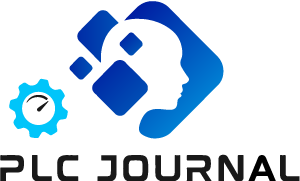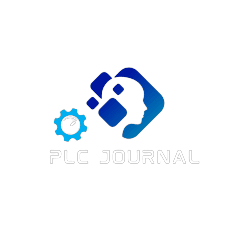SCADA ONLINE COURSE
PLC Scada Full Update Free Course Online 2024
In today’s fast-paced industrial environment, the demand for skilled professionals in automation and control systems is ever-increasing. One of the most crucial aspects of this field is the integration of PLC (Programmable Logic Controller) and SCADA (Supervisory Control and Data Acquisition) systems. For those eager to expand their knowledge and skills.
PLC JOURNAL is The Best Platforms for Free PLC SCADA Courses
Contact on WhatsApp to get PLC Scada Free Course completely free
PLC Scada Full Free Online Course Outline
Understanding SCADA
- Whats is SCADA?
- How to Download SCADA for free?
- Download and Install Rs Logix and Rs Linx
- How to Connect SCADA to Allen Bradley Micrologix 1400 PLC?
- Understanding SCADA designer platform
Things to know before designing SCADA Screen?
- Understanding Tags
Button Elements
- Momentary Button
- Toggle Button
- One shot button
- Multistate Buttons
Numeric Entry & Display Elements
- Simple Lable
- Numeric Lable
- Multi-state Indicator
- LED Display
- Moving Analogue Indicator
- Cylindrical Tank, Level Indicators & Linear Scale
- Meter & Thermometer
- Numeric Input
PLC SCADA Projects (Digital ON/OFF based)
- Understanding the Environment & SCADA Screen
- Creating and Linking Tags
- Understanding the Environment and Ladder Logic
- Creating and Linking tags
- Animaitng the Level Indicators
- Monitoring Plant Status
PLC SCADA Project (Analogue Based)
- Controlling and Monitoring an Analogue Process- VFD Control
Publishing your SCADA Project
- How to publish the SCADA project?
- How to save SCADA Project
- How to Connect Delta PLC to Ignition SCADA Using Modbus
Introduction to Ignition SCADA and interfacing with PLC
- Course Updated with new lectures!
- Downloading and Installing SCADA software
- Creating OPC-UA Server and adding Siemens PLC in Ignition SCADA
- Configuring the Siemens S7-1200 PLC for SCADA Integration
- Testing connection between Siemens PLC and Ignition SCADA
Reading/Writing Tags between Siemens PLC and Ignition SCADA
- How to make PLC tags for Siemens PLC in Ignition SCADA
- How to Create Database Tags for Siemens PLC in Ignition SCADA
- Connect to SCADA without real PLC
Introduction to Database
- What is a database?
- Setting Up MySQL Database and Learning Basic Commands
- Linking MySQL Database to Ignition SCADA
- Checking scripts in Database Query Browser
More visual elements
- Using Tables for PLC tags and Database
- Using Charts for PLC tags and Database
- Utilizing Bar Charts for PLC Tags and Database Integration
- Implementing Pie Charts for PLC Tags and Database Analysis
Industrial Example – Monitoring of Conveyor
- Industrial Application: Conveyor Control using SCADA – Screen Design
- Industrial Application – Making Tags
- Industrial Application – Inserting values into MySQL using Ignition (1)
- Industrial Application – Inserting the values in MySQL from Ignition (2)
- Industrial Application – Data analysis of data recorded in MySQL (1)
- Industrial Application – Data analysis of data stored in MySQL databases (2)
- Industrial Application – Data analysis of data recorded in MySQL (3)
- Industrial Application – Data analysis of data stored in MySQL database (4)
- Industrial Application – Data analysis of data recorded in MySQL (5)
- Time based update/deletion of data
How to make Reports in SCADA
- Creating Reports in the SCADA Screen
What is PLC and SCADA?
Programmable Logic Controller (PLC)
A PLC is an industrial computer that monitors inputs, makes decisions based on its programmed logic, and controls outputs to automate machinery and processes. It is widely used in manufacturing, oil and gas, transportation, and many other industries. Understanding PLC programming is essential for anyone looking to enter the field of industrial automation.
Supervisory Control and Data Acquisition (SCADA)
SCADA is a system used for controlling industrial processes locally or at remote locations. It enables operators to monitor and control equipment, gather data, and provide real-time feedback. SCADA systems are essential in various sectors, including energy, water treatment, and manufacturing.
Why Take a PLC SCADA Course?
- Industry Relevance: Knowledge of PLC and SCADA systems is vital in modern automation, making you a valuable asset to potential employers.
- Skill Development: Courses typically cover programming, troubleshooting, and system integration, enhancing your technical skills.
- Career Opportunities: Proficiency in these systems can lead to job roles such as Automation Engineer, Control System Engineer, and SCADA Technician.
- Flexibility: Online courses allow you to learn at your own pace, fitting into your schedule.
What to Expect in a PLC SCADA Course
When enrolling in a PLC SCADA course, you can anticipate covering various topics, including:
- PLC Programming Languages: Learn languages like Ladder Logic, Function Block Diagram, and Structured Text.
- SCADA System Architecture: Understand the components and architecture of SCADA systems.
- Data Acquisition: Explore methods for data collection and monitoring.
- System Integration: Gain insights into how PLCs and SCADA systems work together for effective automation.
Conclusion
A PLC SCADA full free course online is a fantastic opportunity to enhance your skills and knowledge in industrial automation. With numerous platforms offering free courses, you can easily find one that fits your learning style and schedule. Whether you’re a beginner looking to enter the field or an experienced professional seeking to update your skills, mastering PLC and SCADA systems is essential for success in today’s technology-driven world.
Start Your Learning Journey Today!
Begin your journey into the world of PLC and SCADA by enrolling in one of the free courses mentioned above. The skills you acquire will open doors to exciting career opportunities in automation and control systems.



